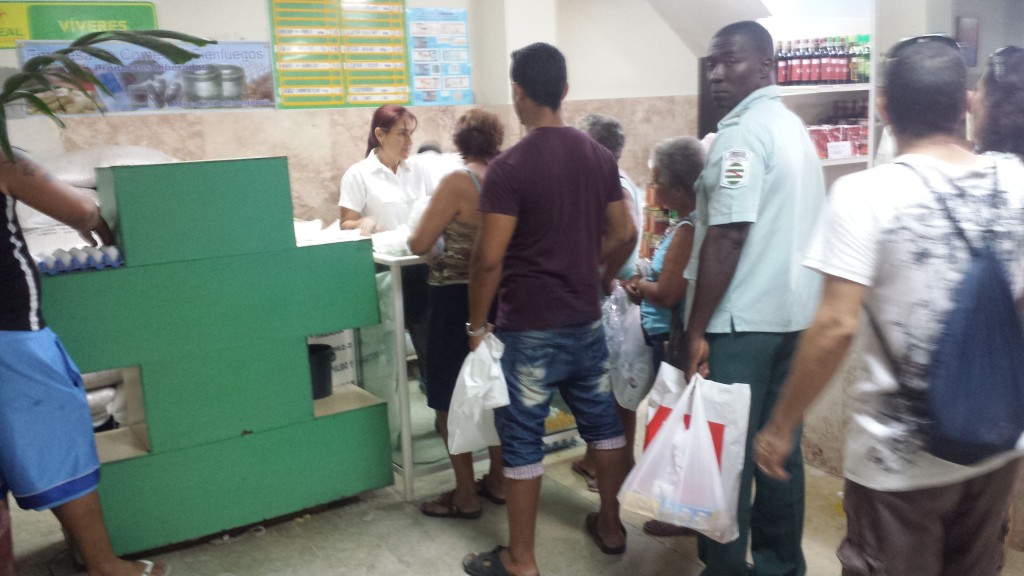Cruising Compass is excited to have received dispatches this winter from cruiser Sissy Puedes in Cuba and will be sharing them over the coming weeks! Here’s the fifth installment…
The bean vendor sizes me up before sidling over. “¿Huevos?” At the agropecuario, fresh-picked, perfect pineapples and papayas are displayed alongside guavas and grated coconut; garlic and onions nestle among other sofrito essentials, cachuca peppers and culantro; pumpkins and dried beans are piled with malanga and boniato. In one corner, Havana Club bottles hold honey, vinegar and banana or chocolate liqueurs.
Good meat isn’t hard to find. Neither is chicken. Eggs are another story.
Huevos—sold exclusively by the state—have such famously unpredictable availability as to be a running joke in Cuban films. Cubans peer into the windows of not-yet open shops to assess the possibilities. My crew stood in line for an hour one morning in a government store watching customers fill their plastic sacks or flat-size egg-carriers. By the time his turn came, huevos no hay.
“How much?”
“Eight CUC.”
“No.”
In the government store, a flat of two dozen eggs goes for about a peso a piece or one CUC (US $1.20). The chandlery occasionally sells the same flats for five CUC, a 400% markup. Vendors have their own sources, urban chicken-herders whose wares are known as huevos particulares. Some of them will be resold.
“Okay. Six.”
“Too much.”
“Okay, do you have a Spanish-English diccionario?”
“Maybe.”
“Okay.” He smiles broadly. “I will trade you. After you bring it, eggs for you are only three CUC.”
“Deal.” I head boatward to look for the dictionary. Could this be construed as trading with the enemy?












